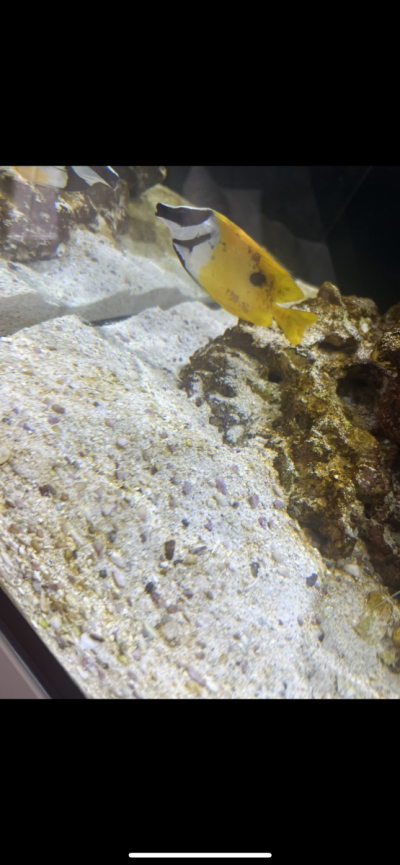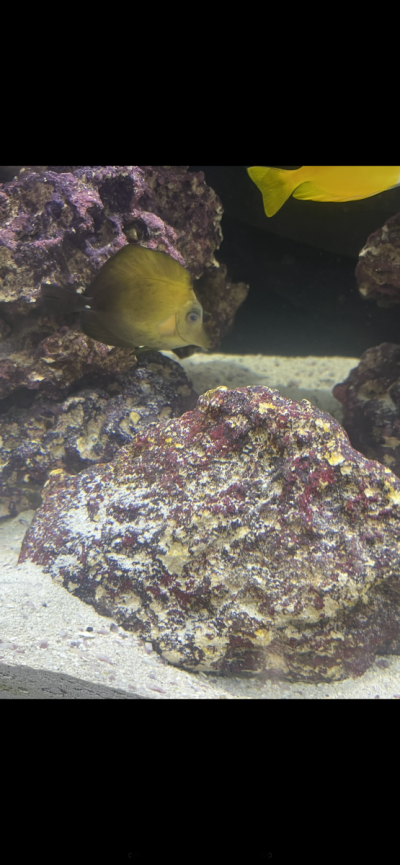Navigation
Install the app
How to install the app on iOS
Follow along with the video below to see how to install our site as a web app on your home screen.
Note: This feature may not be available in some browsers.
More options
You are using an out of date browser. It may not display this or other websites correctly.
You should upgrade or use an alternative browser.
You should upgrade or use an alternative browser.
What kind of disease does my Fox face have?
- Thread starter southeastfishaddict
- Start date
- Tagged users None
Not well versed in fish disease, but maybe a bacterial infection?
vetteguy53081
Well known Member and monster tank lover
View Badges
Excellence Award
Reef Tank 365
RGB
Article Contributor
Tampa Bay Reef Keepers
West Palm Beach Reefer
Hospitality Award
Ocala Reef Club Member
305 Reef Club
Wisco Reefers
Midwest Reefer
Fish Medic
MAC of SW Florida
Rock Pool Reef Keepers
R2R Secret Santa 2023
My Tank Thread
My Aquarium Showcase
Please post a closer pic under same lighting.
Is fish eating and breathing normal?
Any anemones or stinging LPS corals in the tank?
Jay
What the fish are showing is hypermelanization. This is a reaction of the skin to certain injuries. A common cause is being stung by corals or anemones. Some parasites can cause this but that is rarer. There is one called black ich that is common on tangs. Caused by a turbellarian worm under the fish’s skin, it causes black spots. Those look different though, like little black spots.I have an anemone and a few LPS Jay, but not sure if they are stinging .. do you think they may be stings ? I also have this picture of the scopa tang with similar issues :
Jay
Thanks Jay, I’m assuming it is black ich because I had a few tangs and various fish that died suddenly.What the fish are showing is hypermelanization. This is a reaction of the skin to certain injuries. A common cause is being stung by corals or anemones. Some parasites can cause this but that is rarer. There is one called black ich that is common on tangs. Caused by a turbellarian worm under the fish’s skin, it causes black spots. Those look different though, like little black spots.
Jay
Thanks Jay, I’m assuming it is black ich because I had a few tangs and various fish that died suddenly.
Except that the turbellarians I'm talking about cause small, distinct black spots, like pepper. This fish has larger, more diffuse spots. It is probably a parasite or infection, but I can't tell you what though.
For black ich, the best treatment is a 45 minute formalin dip at 150 ppm with good aeration. Trouble is, formalin is tough to source, and then it is toxic to people, so you need to take care when using that in a home.
Jay
Thank you Jay, as always, for your feedback and advice. It’s always appreciated.Except that the turbellarians I'm talking about cause small, distinct black spots, like pepper. This fish has larger, more diffuse spots. It is probably a parasite or infection, but I can't tell you what though.
For black ich, the best treatment is a 45 minute formalin dip at 150 ppm with good aeration. Trouble is, formalin is tough to source, and then it is toxic to people, so you need to take care when using that in a home.
Jay
Similar threads
- Replies
- 21
- Views
- 516
- Replies
- 7
- Views
- 100
TOP 10 Trending Threads
- Replies
- 51
- Views
- 581
-
- Poll
- Replies
- 32
- Views
- 460
- Replies
- 54
- Views
- 1,133
- Replies
- 64
- Views
- 555
- Question
- Replies
- 65
- Views
- 699
- Replies
- 36
- Views
- 411
- Replies
- 31
- Views
- 426
- Replies
- 106
- Views
- 1,797
- Replies
- 26
- Views
- 398
New Posts
-
-
-
SBB - AFTERPARTY SALE- 3 day event 1750 corals. Our Largest sale ever!
- Latest: VintageReefer
-



















